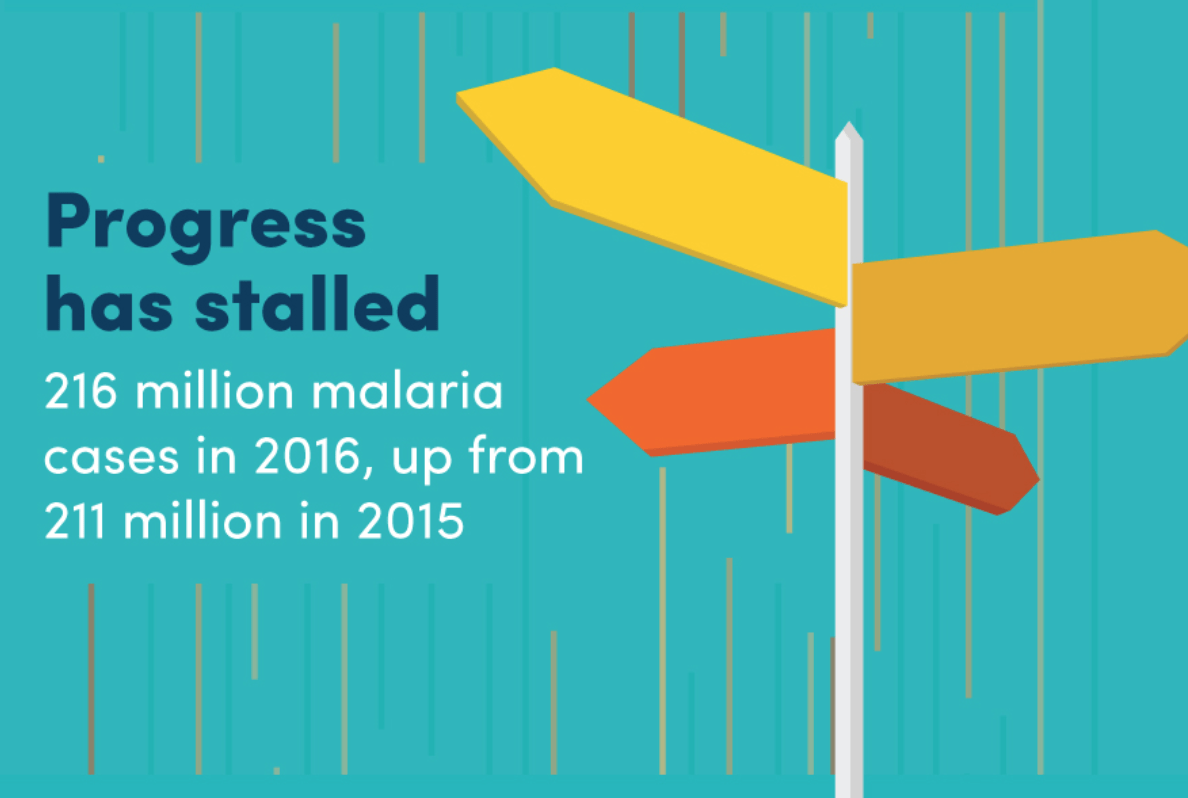It’s easy to think of malaria as an old-fashioned disease. We know malaria really, really well. It’s the kind of illness that gets mentioned in old books; a colonial sort of disease. It’s not new and terrifying like Zika, or deadly like Ebola. It’s just…malaria. We have effective treatments for malaria, evidence-based prevention measures, and an effective algorithm for diagnosing it.
That familiarity doesn’t mean malaria isn’t a threat. The 2017 world malaria report, released today by WHO, reminds us that the fight against malaria isn’t over yet. Malaria might be an old-fashioned disease, but it killed 445,000 people in 2017. Eleven countries actually reported an increase in malaria cases since 2015.
The global malaria response is working; we’re doing the right things to eliminate malaria. But it’s a process, and that process is moving too slowly.
As the report materials state, “…after an unprecedented period of success in malaria control, progress has stalled. This is a trend dating back at least 3 years. Many countries have reported significant increases in malaria cases, particularly those with a high burden of malaria.” It goes on to say that “Countries with ongoing malaria transmission are increasingly falling into one of 2 categories: those progressing towards elimination and those with a high burden of malaria that are experiencing setbacks in their responses.”
In essence, there’s no middle ground – there are countries where we’re defeating malaria and countries where malaria is winning.

What’s standing in the way of a world without malaria?
Money Many malaria-endemic countries don’t have the domestic funding to support an effective malaria response. Malaria elimination requires consistency – continuous support to preventative measures like bednets, mosquito habitat elimination, and indoor residual spraying. If those measures are interrupted, malaria returns. That makes malaria response in poor countries highly dependent on donor funding. Approximately US $2.7 billion was invested in malaria control and elimination efforts globally in 2016. That is nowhere near the US $6.5 billion annual investment required by 2020 to meet the 2030 targets of the WHO global malaria strategy.
Conflict and Crisis Preventing and treating malaria requires a functioning health system. Nigeria, South Sudan, Venezuela and Yemen are all facing both instability and severe malaria challenges. Venezuela’s northern region was certified as malaria free in 1961, but last year it was the leading country in the Americas in terms of malaria burden. And in Yemen, due to the ongoing humanitarian situation, there is a reversal of progress under way with an increase in malaria cases seen in 2016.
Climate Change Climate change is currently destabilizing weather patterns, making it more difficult to eliminate mosquito habitats. It is also expanding mosquito habitat; meaning that malaria and other mosquito-borne diseases will find new footholds around the world.
Resistance Two kinds of resistance could threaten progress against malaria – resistance among mosquitoes to the insecticides using in bednets and indoor spraying, and resistant in the malaria parasites to the drugs used to treat the disease. Right now, we’re staying ahead of resistance in the parasites through combination drug regimens, but that requires constant research and alternations to treatment approaches. Mosquito resistance to insecticides is more widespread, particularly resistance to pyrethroids, which are used in bednets and for indoor residual spraying.
The 2017 Malaria Report Numbers
- In 2016, an estimated 216 million cases of malaria occurred worldwide compared with 237 million cases in 2010 and 211 million cases in 2015.
- Of the 91 countries reporting indigenous malaria cases in 2016, 15 countries – all but India in sub-Saharan Africa, — carried 80% of the global malaria burden.
- The incidence rate of malaria is estimated to have decreased by 18% globally, from 76 to 63 cases per 1000 population at risk, between 2010 and 2016.
- Between 2014 and 2016, substantial increases in case incidence occurred in the WHO Region of the Americas, and marginally in the WHO South-East Asia, Western Pacific and African regions
- In 2016, there were an estimated 445 000 deaths from malaria globally, compared to 446 000 estimated deaths in 2015.
- The WHO African Region accounted for 91% of all malaria deaths in 2016.
